When you're driving, the last thing you want to see is a warning light on your dashboard. But if you own a Nissan Altima, there's a chance you might see one of the Nissan Altima dashboard warning lights come on from time to time. In this blog post, we'll look at some of the most common dashboard warning lights in the Nissan Altima, so you can be prepared if one comes on while driving.
🚨You may be interested in: Nissan Sentra Dashboard Symbols And Meanings
What Kind Of Car is Nissan Altima?
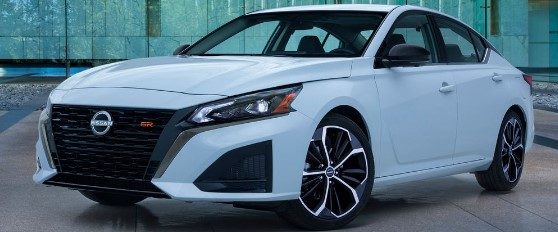
Nissan Altima is a mid-sized sedan that offers a comfortable ride and plenty of features. It's a great choice for families or anyone who wants a reliable car.
When choosing a car, there are many factors to consider. But one of the most important is what kind of car you want. With so many different types of vehicles on the market, it can be hard to decide which one is right for you.
If you're looking for a reliable and affordable car, the Nissan Altima is a great option. It's a comfortable sedan with plenty of features, making it an excellent choice for families or anyone who wants a reliable car.
📢Read also: Nissan Pathfinder Dashboard Symbols And Meanings
Nissan Altima Dashboard Warning Lights and Color Identification
If you're like most drivers, you probably don't pay much attention to the warning lights on your Nissan Altima's dashboard. However, these lights are there for a reason, and knowing what they mean is essential. In this article, we'll look at the different colors of dashboard warning lights and what they indicate.
- Red Warning Lights: Red warning lights are the most serious and indicate that immediate action is needed. If you see a red light, pull over as soon as possible and consult your owner's manual.
- Amber Warning Lights: Amber warning lights are less severe than red ones but require your attention. These usually indicate that some maintenance is needed or a system is malfunctioning. Consult your owner's manual for more information.
- Green and Blue Warning Lights: Green and blue warning lights are generally informational only and do not indicate a problem with your vehicle. However, it's still a good idea to be aware of what they mean to be prepared if something goes wrong.
🎯Suggested article: Nissan Qashqai Malfunction Warning Light Orange
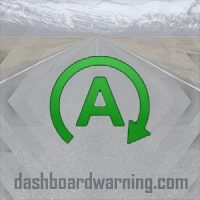 |
Nissan Altima Automatic Start/Stop Warning LightIf your Nissan Altima has an automatic start/stop system, there will be a warning light on the dashboard to indicate when the system is engaged. If this warning light is illuminated, the automatic start/stop system is malfunctioning and needs to be serviced. |
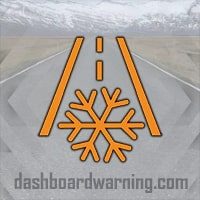 |
Nissan Altima Ice Warning LightWhen the Nissan Altima Ice Warning Light comes on, the temperature outside is at or below freezing, and there is a risk of ice on the road. This light will come on automatically when the conditions are met and will stay on until they are no longer met. It is essential to be aware of this warning so that you can take extra caution when driving in these conditions. |
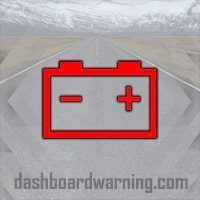 |
Nissan Altima Battery/Charging Warning LightThe Nissan Altima has a battery/charging warning light on the dashboard that looks like a battery. This light comes on when the charging system is not working correctly. The most common cause of this is a lousy alternator. Other possible causes include a loose or damaged drive belt or a problem with the battery itself. |
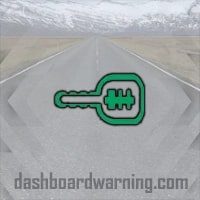 |
Nissan Altima Immobilizer Warning LightThe car's immobilizer system is activated if the Nissan Altima Dashboard Warning Lights are on. This could be due to several reasons, such as someone trying to break into the car or a problem with the car's electrical system. If this light is on, taking the vehicle to a Nissan dealer is essential to have it checked out as soon as possible. |
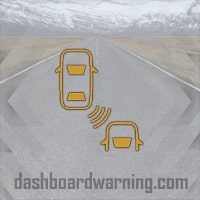 |
Nissan Altima Blind Spot Warning LightIf you see a warning light on the dashboard of your Nissan Altima that looks like an eye, it is the blind spot warning light. This light comes on when the sensors detect a vehicle in your blind spot. It is essential to take note of this warning and be extra cautious when changing lanes or merging. |
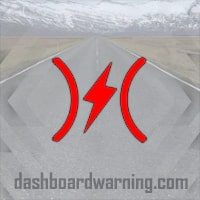 |
Nissan Altima ETC Warning LightIf you see the Nissan Altima ETC warning light, it means that there is an issue with the electronic throttle control system. This could be several things, but the most likely cause is a dirty throttle body. To fix this, clean the throttle body and reset the light. |
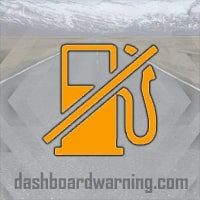 |
Nissan Altima Fuel Outage Warning LightIf your Nissan Altima is experiencing a fuel outage, you should check the fuel gauge first. If the needle points to "E," you're likely out of gas. However, if the needle is elsewhere, there may be a problem with the fuel gauge itself. If you think you may be out of gas, the next step is to turn on your emergency flashers and pull over to a safe location. Once safely off the road, open the hood and locate the fuel cap. Remove the lid and inspect the area around it for any leaks. If there are no leaks and you're confident you have enough gas in the tank, restart the engine and see if the warning light goes away. If it does, drive to the nearest gas station and fill up. If the problem persists, contact a Nissan service center for further assistance. |
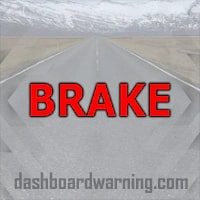 |
Nissan Altima Brake Warning LightThe Nissan Altima has a warning light when the parking brake is applied. This light is a reminder to release the parking brake before driving. If the parking brake is not removed, the car will not move. |
 |
Nissan Altima Traction Off Warning LightIf your Nissan Altima has a traction-off warning light on the dashboard, the car's traction control system is not working correctly. This can be caused by several things, including a loose wheel, low tire pressure, or a problem with the car's electronic stability control system. If you see this light, you should take your vehicle to a Nissan dealer or qualified mechanic as soon as possible to have it checked out. |
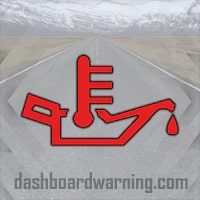 |
Nissan Altima Oil Temperature Warning LightIf your Nissan Altima has an oil temperature warning light on the dashboard, it means that the engine oil is too hot. Several things, including a blocked oil cooler, a low oil level, or a faulty oil pump, could cause this. If you see this warning light, pull over immediately and turn off the engine. Let the engine cool down for at least 30 minutes before checking the oil level and adding more if necessary. If the problem persists, have the car towed to a nearby service station or dealer for further diagnosis and repairs. |
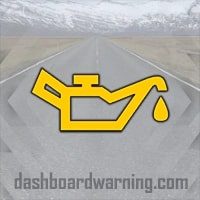 |
Nissan Altima Low Oil Pressure Warning LightIf your Nissan Altima has a low oil pressure warning light on the dashboard, the vehicle's oil pressure is low and needs to be checked. The oil pressure in a car keeps the engine lubricated and running smoothly, so it's essential to keep an eye on it. A few things can cause the oil pressure in a vehicle to drop, such as using the wrong type of oil, not changing the oil often enough, or a leak in the engine. If you see the low oil pressure warning light on your dashboard, check the oil level and add more if needed. You should also have your mechanic check the engine for any leaks. |
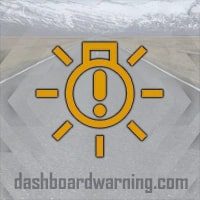 |
Nissan Altima Exterior Light FaultIf you see the Nissan Altima exterior light fault warning light on your dashboard, it means that there is a problem with one or more of the Altima's exterior lights. This could be a problem with the headlights, taillights, brake lights, or turn signals. If you see this warning light, you should take your car to a Nissan dealership or a qualified mechanic to have the problem diagnosed and repaired. |
 |
Nissan Altima Dusk Sensor Warning LightThe Nissan Altima Dusk Sensor Warning Light is a dashboard light that illuminates when the vehicle's headlights are turned on and it is getting dark outside. This warning light serves as a reminder to the driver to turn on their headlights. If the Dusk Sensor Warning Light is illuminated, it is recommended that the driver turns on their headlights. |
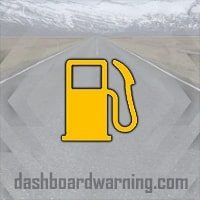 |
Nissan Altima Fuel Level Warning LightIf the fuel level warning light on your Nissan Altima's dashboard is illuminated, the vehicle's fuel tank is low on fuel. The light will typically come on when the fuel tank is at or near empty. When this happens, you'll need to add more power to the tank as soon as possible to avoid running out of gas. If you see the fuel level warning light while driving, you should pull over and stop as soon as it is safe. Once stopped, turn off any unnecessary accessories and turn the engine off. Then, open the hood and locate the vehicle's gas cap. Remove the gas cap and use a funnel to pour more gasoline into the tank until it reaches the "full" line on the side of the tank. Replace the gas cap and start the engine. The fuel level warning light should now be turned off. |
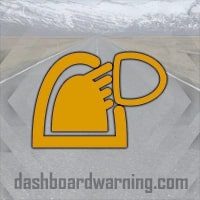 |
Nissan Altima Rain Sensor Warning LightWhen the Nissan Altima's rain sensor warning light is illuminated, it means that there is an issue with the vehicle's rain sensor system. This system is responsible for detecting rainfall and activating the windshield wipers automatically. If there is a problem with the rain sensor, it could result in the windshield wipers not working correctly. In some cases, the rain sensor may need to be replaced. |
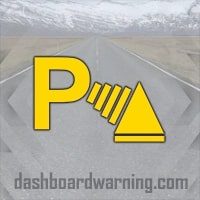 |
Nissan Altima Parking Sensors Warning LightWhen you see the parking sensor warning light on your Nissan Altima's dashboard, it means that there is a problem with the vehicle's parking sensors. The parking sensors are located in the front and rear bumper, and they help you to park safely by detecting objects in your path. If the parking sensors warning light is flashing, it means that the sensors are not working correctly, and you should take your car to a Nissan dealership for service. If the light is solid, the parking sensors are turned off. You can turn them on by pressing the button on the center console. |
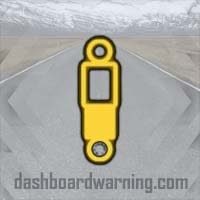 |
Nissan Altima Suspension Control Warning LightThe Nissan Altima has a suspension control warning light that illuminates when there is an issue with the car's suspension system. This could be due to a problem with the shock absorbers, springs, or other suspension components. If this light comes on, it is essential to have the car checked by a qualified mechanic as soon as possible to avoid further damage to the suspension system. |
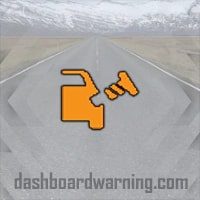 |
Nissan Altima Loose Fuel Filler Cap Warning LightWhen your Nissan Altima's fuel filler cap is loose, the vehicle will display a warning light on the dashboard. This is to remind you to check and tighten the cap before driving. A loose fuel filler cap can cause your vehicle to lose fuel efficiency and performance. It can also lead to dangerous situations if the fuel spills while you're driving. If you see the Nissan Altima loose fuel filler cap warning light, check the cap and tighten it before continuing your journey. |
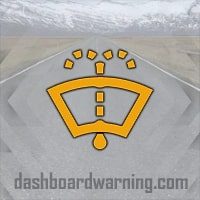 |
Nissan Altima Low Washer Fluid Warning LightThe reservoir's washer fluid level is low if the Low Washer Fluid Warning Light comes on in your Nissan Altima. Add washer fluid to the pool as soon as possible. Do not continue to drive with this light on, as you may not be able to see correctly if you need to use your windshield wipers. |
Pros & Cons of Nissan Altima Vehicles
Nissan Altima vehicles offer many features and benefits that can appeal to various drivers. However, some potential drawbacks should be considered before making a purchase.
PROS:
- Reliable and well-built cars that can last for many years with proper maintenance
- Attractive design inside and out
- Generous standard features listed on most model
- Great fuel economy thanks to efficient engines
CONS:
- Some lower trims can feel a bit sparse in terms of features and equipment.
- Ride quality is not as smooth or comfortable as some rivals.
- Not as much performance potential as other sporty midsize sedans.
Taking action immediately is essential if you see any of the Nissan Altima dashboard warning lights illuminated. These warning lights are designed to let you know when there's an issue with your vehicle, so ignoring them could lead to further damage. If you're unsure what to do, contact a Nissan dealer or service center, and they can help you.
⚡️Another article: Nissan Rogue Dashboard Symbols And Meanings
FAQs About Nissan Altima Dashboard Warning Lights
Is An Altima A Good First Car?
The Nissan Altima is a vehicle that can be considered when looking for an ideal first car. It typically provides average or above-average fuel economy, ample seating space, and strong safety ratings, making it an attractive option for those seeking reliable transportation. As with any purchase, potential buyers should carefully research the available models to ensure they get the best value.
What are Nissan Altimas known for?
Nissan Altima has been a mid-size car in the market since 1992. It is part of Nissan's Bluebird line, first introduced in 1955. The Altima offers drivers a larger and more powerful vehicle than the Sentra while still providing an economical and luxurious ride compared to the Maxima.
Is the 2013 Nissan Altima a reliable car?
The 2013 Nissan Altima is the first model year of the 5th generation, offering new powertrains, styling, and technology. While J.D. Power's reliability ratings are average, there have been many owner complaints in this model year, leading to it being considered the worst for this car line.
Does Nissan Altimas go fast?
The 2021 Nissan Altima boasts a top speed of 130 mph, making it an ideal choice for those who value fast performance. This vehicle is equipped to provide superior power and handling that can keep up with the demands of the roads. With its advanced features and capabilities, this car has something unique to offer any driver looking for a reliable ride.
Was this page helpful?

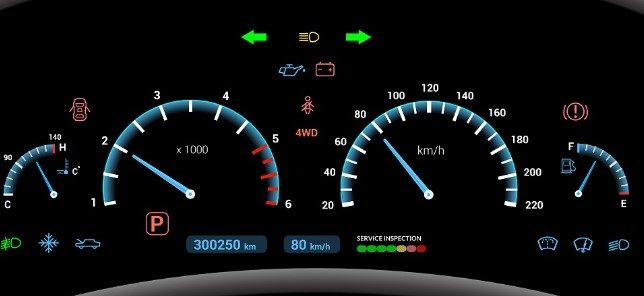
More important content about Nissan
Nissan Sentra Years To Avoid?
Nissan Murano Years to Avoid - 6 Worst Years
Nissan Juke Years to Avoid
Nissan Master Warning Light (Causes And Solutions)
Forward Emergency Braking Light on Nissan Rogue
Tips and Advice
Porsche Cayenne Years To Avoid
Subaru Legacy Years To Avoid - 5 Worst Years
Pt Cruiser Years To Avoid
Use 5w30 instead of 0w20 - Advantages and Disadvantages
Tractor Dashboard Symbols And Meanings
Suzuki Sx4 Years To Avoid - 5 Worst Years